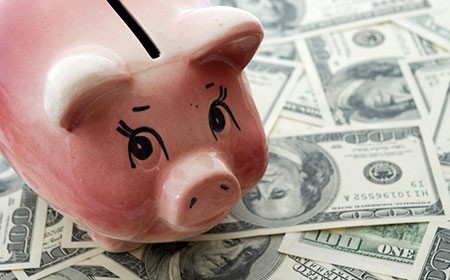Some 401(k) Plans Let You Take the Wheel If You Dare US News
Post on: 20 Август, 2015 No Comment

Be aware of these risks when managing your own retirement savings plan.
It’s a well-established, if discouraging, fact that professional fund managers routinely underperform the market. According to Morningstar, 79 percent of large-cap fund managers underperformed the S&P 500 stock index last year.
Could you, the average investor, do better? Many 401(k) plans allow you to try.
[See Top-Rated Funds by Category Ranked by U.S. News Mutual Fund Score .]
What’s known as a brokerage window allows 401(k) participants to invest some portion of their contributions outside of the dozen or so mutual funds in the typical 401(k) menu. The feature is sometimes referred to as a self-directed 401(k) or self-directed brokerage account. Your employer (the plan sponsor) decides whether your plan offers a brokerage window, and what proportion of your contributions you can invest through it. Your employer can also determine the range of investments permissible through a brokerage window. Some might restrict you to mutual funds, while others might permit a broader range of choices.
The rise of more flexible 401(k) investing options started as participants began demanding more control over their retirement accounts during the bull market of the 1990s. The number of sponsors adopting the feature continues to rise despite—or perhaps because of—the market swoons of the past four years. A survey by consulting firm Aon Hewitt shows that 29 percent of plans offered a self-directed feature last year, up from 18 percent in 2008. The bigger the plan, the more likely the option: Of the plans on Vanguard’s platform, 23 percent of those with 5,000 or more participants offer a brokerage window, compared with 11 percent of Vanguard-serviced plans overall.
That doesn’t mean your typical investor is eager to get behind the steering wheel. While 23 percent of Vanguard’s 401(k) participants are offered a brokerage option, only 1 percent use it, the firm says. Fidelity says 38 percent of its participants have a brokerage window, but that only 2.4 percent use it.
Schwab—one of the biggest servicers of self-directed 401(k) brokerage accounts—says the small percentage of its 401(k) clients with brokerage accounts (3.4% of the total) invest 80% of their 401(k) assets through them, and have the rest in their plan’s core offering. As of March 31, Schwab says, 54 percent of these self-directed assets were invested in equities, 39 percent in mutual funds, and 7.6 percent in fixed-income assets.cent in mutual funds, and 7.6 percent in fixed-income assets.
The biggest single equity holding was Apple (AAPL), accounting for 8 percent of equity assets in Schwab’s self-directed accounts, followed by the SPDR Gold Trust (GLD), an exchange-traded fund. The most popular mutual funds were the Schwab S&P 500 Index fund (SWPPX), which accounted for 1.8 percent of mutual-fund assets, followed by PIMCO’s Total Return bond fund (PTTRX).

Older investors are more likely than younger workers to use the option. About half of Schwab’s self-directed 401(k) investors are 50 and older, compared with about a quarter who are in the 20-to-39 demographic. Men are more likely to self-direct than women (8 percent vs. 3.6 percent), according to Aon Hewitt.
Federal rules require that plans which offer a brokerage-window option offer it to all in the plan, not just executives. But that doesn’t mean self-direction is appropriate for everyone. The concept was developed, after all, with more sophisticated investors in mind, and it long predates the rise of the 401(k).
It was a standard plan design, especially for law firms, historically, says David Wray, president of the Plan Sponsor Council of America, a nonprofit that represents companies offering 401(k) and profit-sharing plans. Even today, he says, the people who use [brokerage windows] are typically highly paid—not your typical 401(k) participant going into a target-date fund.
Indeed, utilization of the brokerage option tends to rise along with income: Among people making $100,000 or more, some 10 percent used them in 2010, says Aon Hewitt, and their total 401(k) balance averaged $200,000, about three times the average 401(k) balance.














